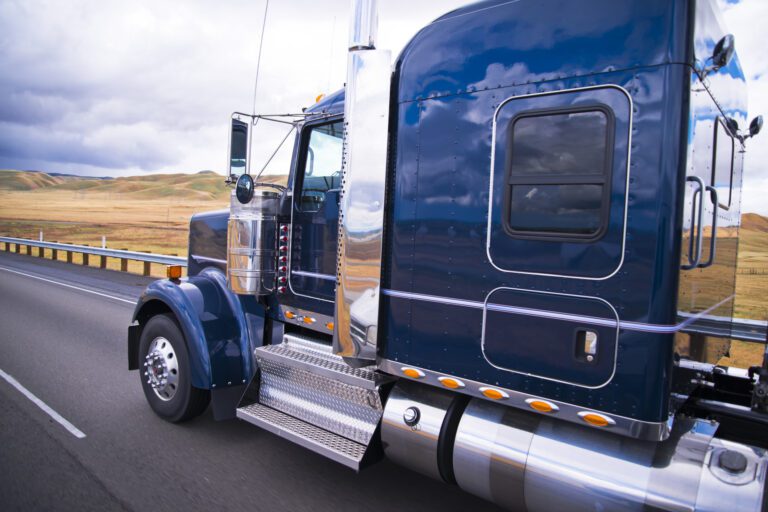BLOOMINGTON, Ind. — The trucking industry will recover from the current downcycle, but progress will be slow.
That was the consensus reached during a Jan. 11 webinar hosted by FTR Transportation Intelligence.
The event was moderated by FTR CEO Jonathan Starks, while Avery Vise, vice president of trucking, and Eric Starks, chairman, contributed their insights and expertise.
State of the Industry
Vise kicked off the webinar, providing an overview of the economy and what the trucking industry can expect in the coming months.
“We’re at record levels in both services and goods in spending,” he said, explaining that spending for services is high, but that inflated spending could well be due to … well, inflation.
Another economic sign Vise pointed to is average household debt. Using data from the Federal Reserve, he showed consumers are borrowing more and saving less — both negative trends. However, the other side of that coin is an uptick in available cash in checking accounts and other liquid assets.
“What we see is a dramatically larger amount of money in the system right now to support consumption,” he explained. “So, this level of consumption certainly can continue in the absence of some type of inflection.”
Vise also addressed inventories to sales ratios in the wholesale sector.
“The inventories are actually quite lean relative to history,” he said. “In fact, they’re the leanest on record except for the period of endemic disruption itself, which we would put in between mid-2020 through the end of 2021. So, this is something to watch.”
“Sluggish” is the word Vise used to describe industrial production, another of the key indicators used in his analysis.
“We’re looking at having a decline this year of about a half a percent, certainly nothing to get excited about. That was after not much of an improvement last year — basically two tenths of a percent,” he said. “As we go into 2025, we’re expecting maybe a half percent or more growth over 2024. Not horrible, but certainly not good.”
Truckers, of course, want to know how all this ties into the freight market and what they can expect going forward.
“When we look at the portion of the economy that is tied to freight — the goods transport sector — that is decidedly less rosy even than GDP (gross domestic product),” Vise explained. “We were flat, basically, last year, and this coming year, we expect 1.2% growth. We’re projecting a little over 2% in 2025. One point two percent growth does not get you very much in terms of actual freight volumes.”
Vise addressed another hot topic — inflation.
“We are seeing inflation starting to cool,” he said. “The increases in (interest) rates are probably done, and we’re going to potentially see declines. I think our assessment is that the risks are probably still a little bit weighted to the downside, but not really significantly.
“Let’s go on and talk about the elephant in the room, which is capacity,” he continued. “That’s really where things are going to change in the coming year, as we don’t see a lot of reason to expect a big increase or decrease in freight volume.”
Turning his attention to carrier population, using the number of carriers registered by the U.S. Department of Transportation, Vise noted that the fourth quarter of 2023 saw the largest-ever net decreases in carriers across the nation. However, he said, the number of active motor carriers is still considerably high.
“More to the point is that we still are somewhere in the neighborhood of 100,000 carriers higher than we were before the pandemic,” he explained. Even though many of those extra carriers are smaller businesses with only one to three trucks, that’s still a lot of trucks competing for the available freight, he added.
In addition, even when carriers close their doors and registrations are revoked, it doesn’t always mean trucks and drivers are removed from the freight market. The owners of some of those trucks enter lease agreements with carriers and continue to operate, just under another carrier’s authority. Other trucks may be parked or sold, with the owner taking a job as a company driver, filling one of that carrier’s parked trucks.
Vise predicts the industry will see some rises in freight rates by the end of the year — but he says they’ll be small ones. He pointed out that rates are still about 10% higher than they were at the peak of the 2018 market; however, operating costs have risen substantially since then.
Rail and Intermodal Impact
Eric Starks spoke next, providing an update on rail freight before going into the intermodal segment of the market. He explained that, as rates rise in the trucking industry, more shippers look to rail to move shipments. Unfortunately, not all railroads have a good record with time-sensitive freight and for some shipments rail isn’t an option, but that still leaves plenty of available shipments.
In the meantime, he said, the rail industry has suffered from the same falling rates as trucking. Rail intermodal will likely be impacted by the same conditions as trucking — the difficulty of getting containers to U.S. ports.
One major problem is the Panama Canal, which depends on the availability of water from inland lakes to operate locks and keep canal levels high enough for shipping. Dry conditions, as well as the additional water needed by the expanded canal, have resulted in water levels dropping low enough at times to halt operation.
On the other side of the world, another vital canal could be in trouble. The Suez Canal depends on traffic through the Red Sea. Since late 2023, Houthi rebels in Yemen have directed targeted attacks at commercial shipping vessels, and have vowed to continue doing so, despite missile strikes by the U.S. and Britain. (See related stories here.)
Because of the unrest and increased risk of attack, ship owners have announced rerouting of container ships. Because of this, numerous ships may arrive at different U.S. ports than they normally would, changing both rail and truck transportation needs.
In the end, analysts say, the freight industry can expect conditions for all types of trucking to remain difficult through at least the first half of the year — perhaps easing slightly toward the end of 2024.
Cliff Abbott is an experienced commercial vehicle driver and owner-operator who still holds a CDL in his home state of Alabama. In nearly 40 years in trucking, he’s been an instructor and trainer and has managed safety and recruiting operations for several carriers. Having never lost his love of the road, Cliff has written a book and hundreds of songs and has been writing for The Trucker for more than a decade.









We are in the logistics industry as well.
It’s been a difficult year!!
We invested in Chassis & now we have not enough containers coming in!!!
Our Chassis are stacked in our yard surviving NO purpose!!
I honestly hope it turns around sooner than this article is predicting.
THANK YOU for the information.